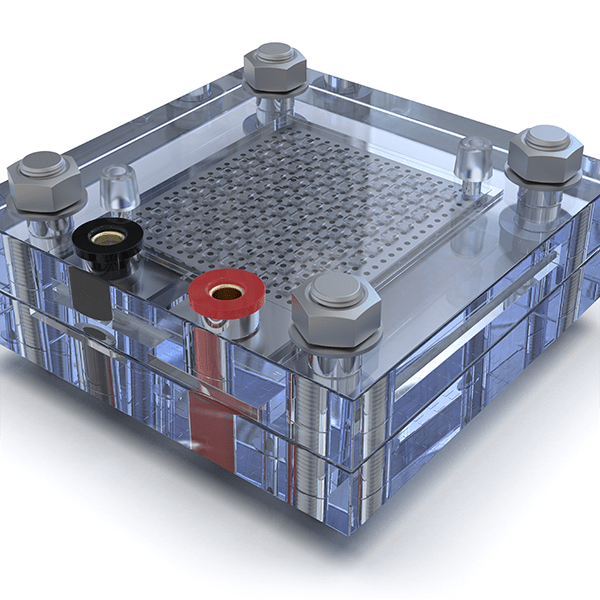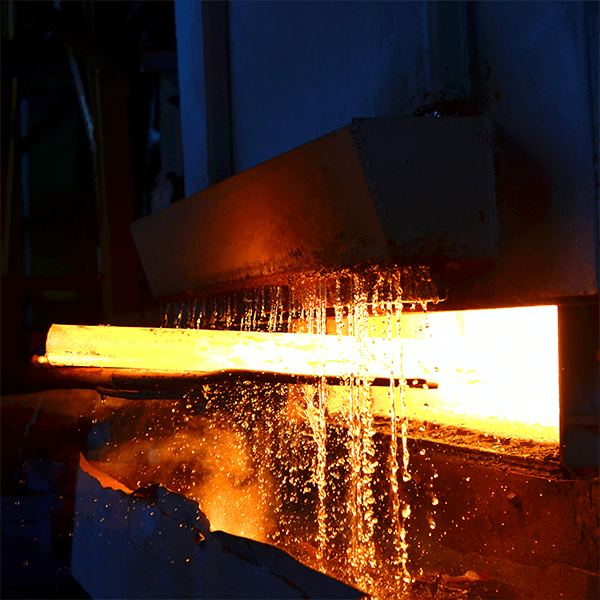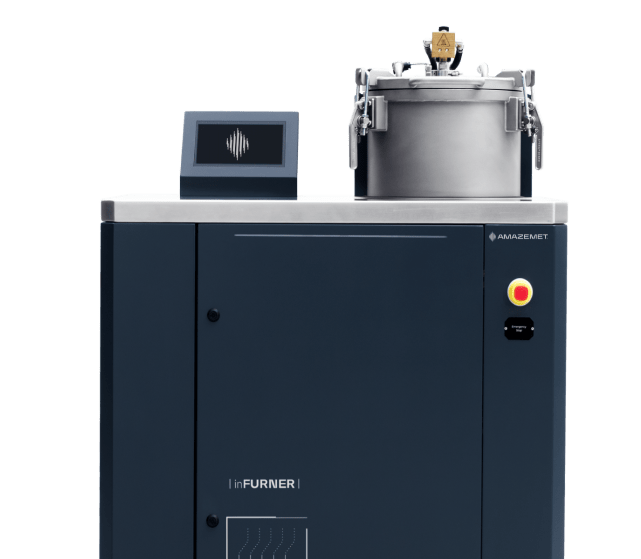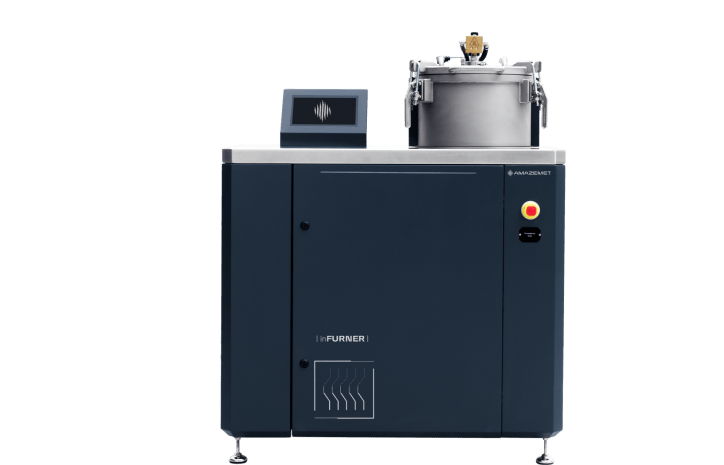Compact high vacuum
furnace
Compact high vacuum
furnace
Distortion is one of the main problems encountered in AM processes. Proper heat treatment is, therefore, crucial for obtaining high-quality products. High-vacuum furnaces provides reliable heat treatment conditions in every process.
Apart from metal 3D printing post-processing, vacuum furnace is an obligatory equipment in many scientific and industrial laboratories. Vacuum furnace applications include:








Learn more about vacuum furnace technology and applications

Core benefits & features
Hot zone specification
Hot zone materials – heaters and thermal screens – vary depending on the maximum furnace temperature requirements:
1200 °C: molybdenum heaters and thermal screens. Processing example: stress relief in Ti-based alloys
1600 °C: tantalum heaters and tungsten thermal screens. Processing example: sintering of refractory alloys
For both temperature options there are two hot zone sizes available:
Φ120 mm x 100 mm height – compatible with small build plate 3D printers,
Φ200 mm x 200 mm height – compatible with popular medium-sized build plate 3D printers.
In all setups, hot zone vacuum down to 10-2 mbar is reached with the preliminary pump. Then, the high-vacuum pump takes over to reach vacuum levels of 2×10−7 mbar (with a turbomolecular pump) or 3×10−9 mbar (with an ionization pump).


Choose the setup for your needs
inFurner features various hot zone dimensions compatible with popular printers, and options that allow to expand furnace possibilities.
Learn more about our projects and collaborations
Contact our specialist who will help you choose the right options with respect to your needs
impact of vacuum heat
treatment on your parts
Contact us to find out about possibility of sample heat treatment of your part.
Leave a message and our application engineer will contact you within 3 working days.
HIGH VACUUM FURNACE
by AMAZEMET
COMPACT SOLUTION FOR EVERY LABORATORY
ALL PERIPHERALDEVICES ENCLOSED IN ONE, DESK-SIZED CASING
FURNACE EXACTLY AS YOU NEED IT
– HOT ZONE DIMENSIONS MAY VARY FROM 120 TO 200 mm IN DIAMETER AND FROM 100 TO 200 mm IN HEIGHT
– YOU CAN CHOOSE BETWEEN HEATING PARTS MADE OF MOLYBDENUM, TANTALUM OR TUNGSTEN, ALLOWING TEMPERATURE TO REACH 1600 ºC WITH ΔT<2 ºC
– FURNACE IS READY TO FEATURE EITHER DIFFUSION, TURBOMOLECULAR OR ION VACUUM PUMP PROVIDING PRESSURES RANGING FROM 3×10-5 to 3×10-9 mbar
EVERYTHING UNDER CONTROL ANYWHERE YOU ARE
– PROGRAMMABLE CUSTOM HEAT TREATMENT CYCLES
– FURNACE CONTROL VIA TOUCH PANEL
– PROCESS PARAMETERS SELF-MONITORING FOR SAFETY PURPOSES
– ON-LINE DATA TRANSFER
– PROCESS RECORDING
AVAILABLE SETUPS AND FEATURES
HEATING SYSTEM
– Molybdenum (Max. temp. 1200 °C)
– Tantalum (Max. temp. 1600 °C)
PROCESS GAS SYSTEM
– High Pressure Gas Quenching (HPGQ) up to 100 [°C/min]
– Available gases: Ar; He
– Mass flow controller (Ar)
– Gas flow maintenance in the working chamber
FURNACE INSTRUMENTATION
– Electronic display of furnace parameters:
– Pressure
– Temperature
– Valves’ position status
– Furnace devices’ status
– Residual oxygen sensor
VACUUM
Low
– Oil rotary vane pump – 3×10-3 [mbar]
– Dry scroll pump – 7×10-3 [mbar] – e.g. for treatment of semiconductors
High
– Diffusion pump – 3×10-6 [mbar] with LN2 cooling up to 8×10-8 [mbar]
– Turbomolecular pump – 9×10-8 [mbar]
– Ion pump – 3×10-9 [mbar] – for treatment of semiconductors
COOLING
– Water cooler – 4,6 kW
– Water chiller – 3 / 10,4 / 28 kW
– Liquid nitrogen for diffusion pump
PROCESS MANAGEMENT
– Control panel
– Process recording
– Remote access to the furnace parameters

